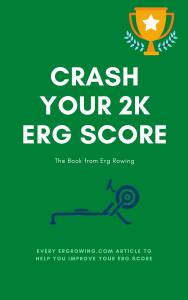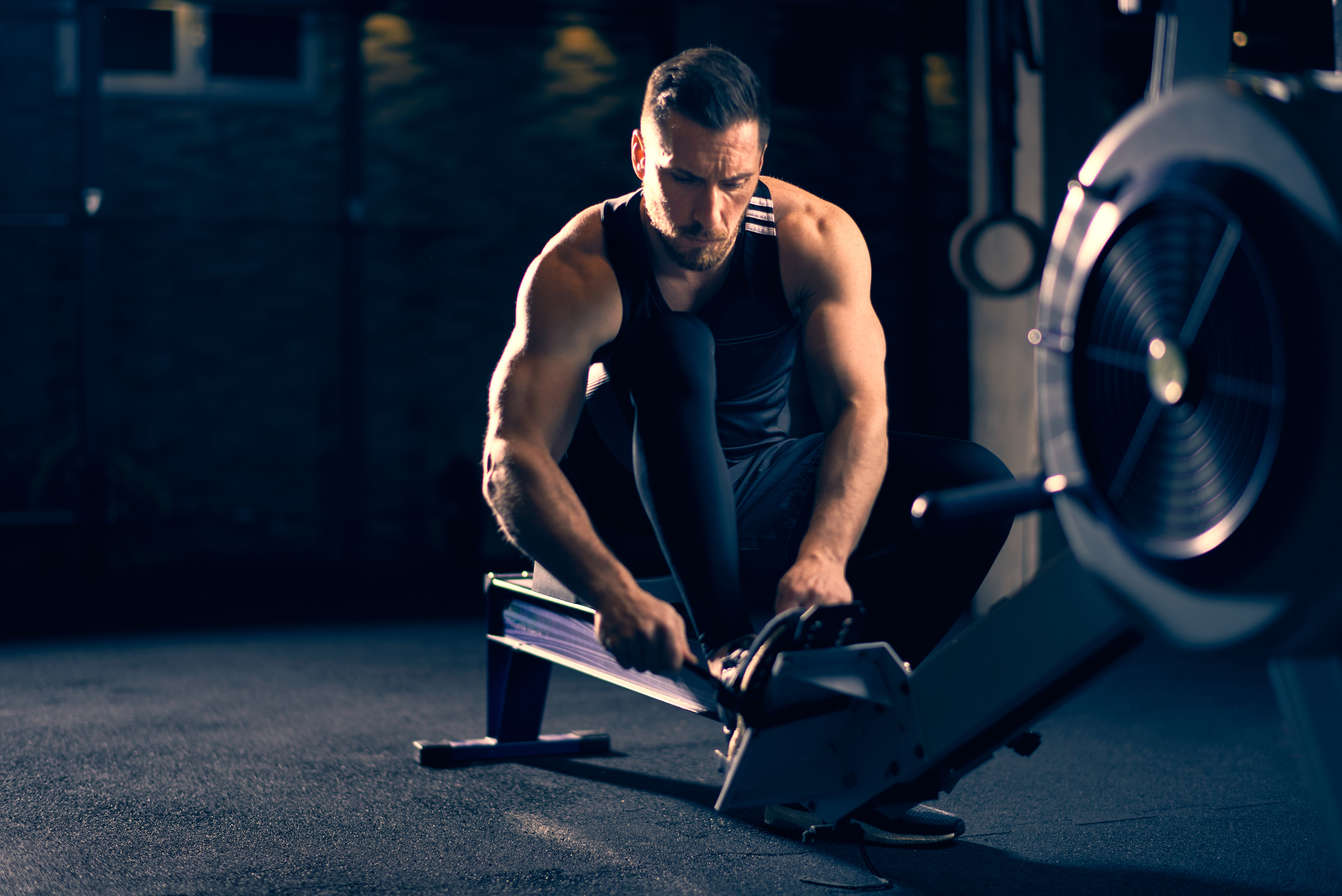This is a new rowing workout that we’ve had good success with recently. It’s a great workout that can be done in the boat or on the erg. Most of the rowers and ergers that have tried it all said it helped them to precisely:
- Row a really hard rowing session
- Touch many training zones
- Stay motivated (it’s a mentally alerting workout)
- Jolt from the comfort zone into new rowing territory.
But be warned – of all the rowing workouts that ergrowing.com recommends this one is one of the toughest.
But most of all it’s a rowing workout designed to help you develop an awesome middle 1000 2k race pace.
Here it is:
Warm Up:
- Warm up for around 20 minutes with some solid rowing.
- After around 10 minutes do a 1 minute pipe opener rating 30 – 32 rowing hard.
- Next (after a short break) do 3 x 15 strokes at rate 32, 34 and 36 respectively.
- Take around 1 minute easy rowing between each 15 stroke push.
- Finally do some easy rowing for 2 – 3 minutes and get ready for the actual rowing session.
Phase I
- Row hard at 32 strokes per minute for 30 seconds, then drop the rate down to 30 for the next 30 seconds.
- Repeat this wave for a total of 5 minutes.
- In other words you will do each rate (30 and 32) 5 times in a row at 30 seconds each continuously for 5 minutes
Take 5 minutes easy rowing and repeat the 30 second rowing wave for 5 minutes.
- After that take 5 minutes easy rowing again and repeat the wave a third time.
- Row easily for 5 minutes and take a short break.
- 7 minutes after finishing the 3rd rowing wave begin the next phase.
Phase II
- 12 minutes steady rowing rate 28.
- Focus on power and rhythm developed in the 5 minute wave phase.
- Take a 5 minute rest and repeat the 12 minute workout.
- That’s it!
- Warm down in the usual way.
Rowing Tips:
For the 5 minute wave workout make sure you work hard. For some rowers (and rowing crews) rating 30 – 32 in the summer racing season is easy. But if you do it with extra punch and purpose, you will get an excellent physically challenging workout.
But here’s the best part. Most rowing workouts focus (mainly) on the physical training effect of the program. Very few have a physical element intertwined with a specific technical & physical element built into the workout.
Very few are designed so that it would be impossible to do a good workout without using your technique and physicality properly.
Let me explain.
In this workout, when you drop the rate down from 32 to 30 strokes per minute you should actually row harder. That’s right – you should actually work harder in the water.
Now to some rowing coaches (and rowers) doing something like this is borderline rowing heresy– it betrays the very fundamentals of ratio and rhythm with the timing and speed of the boat.
Accepted.
That stuff is all fine and dandy and in the real world of racing 2k competitively its actually crucial. But in the world of training and practice you need to learn to improve your weaknesses.
And you know what one the biggest weaknesses (technically & physically) of mid level rowers and rowing crews is?
The 2k Rowing Settle Slump
Is that point of a rowing race where crews make a change from the after start phase to the middle of the 2k course phase. It’s the point where most crews actually lose speed and set themselves up for a slower than potential middle of the course pace..
It happens because rowers and crews lighten off the work rate in the water way too much.
Trust me. 50 – 60 % of rowing crews (at mid level) do this in every race.
Powering down as the rate drops causes two things:
- A drop in speed (because rate and power drop)
- A distortion of the rhythm (power drops more than rate)
The distortion of the rowing rhythm causes all sorts of problems for the rest of the race. Crews get too tired rowing in an incomplete rhythm that is not a direct match of the boat speed.
Here’s How To Solve It.
The rhythm at the beginning of a rowing race is generally good amongst most crews. But most lose it when they drop the rate down for the middle 1k.
Of course it is necessary for survival to drop the rate and power (even the best crews in the world could not hold the rate, length and power of the start phase for the entire 2k – although some are getting close)
You and your crews need to train and practice the transition from the racing start into the middle 1000. Doing the 5 minute workouts (with 30 second waves) will help you and your crew practice that transition.
So when the rate drops by 2 pips – Harden On In The Water.
But what should you do when the rate goes back up to 32? Pull lighter? Pull the same?
I’ll leave that up to you to feel it out. But most will pull harder.
Is this an Erg Workout?
I’ve tried this rowing workout on the erg and found it to be a very demanding erg session. Be warned this workout should only be attempted when you are mentally and physically fit. And more importantly, should only be attempted once a week – max.
[mc4wp_form]
Want More Erg Rowing Insights?
Subscribe to get notified immediately about new posts.
Introducing the 2K Erg Book

See Book Chapters
9 Chapters full of the best articles from ergrowing.com

